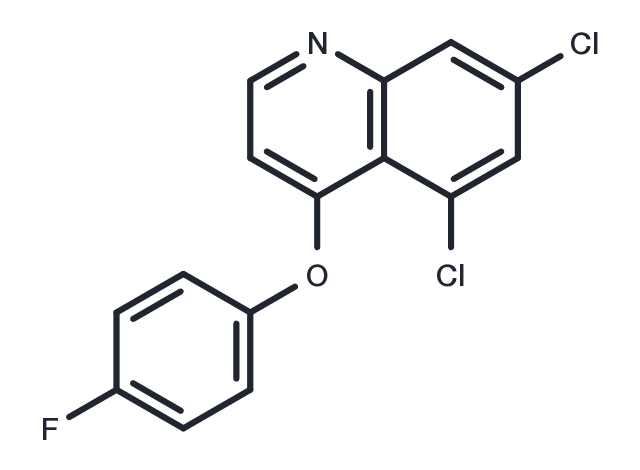Powder: -20°C for 3 years | In solvent: -80°C for 1 year


Quinoxyfen has antimicrobial activity and can be used to study powdery mildew.

| Pack Size | Availability | Price/USD | Quantity |
|---|---|---|---|
| 10 mg | In stock | $ 33.00 | |
| 25 mg | In stock | $ 55.00 | |
| 50 mg | In stock | $ 89.00 | |
| 100 mg | In stock | $ 155.00 |

| Description | Quinoxyfen has antimicrobial activity and can be used to study powdery mildew. |
| Synonyms | DE-795, DE795, Legend, DE 795 |
| Molecular Weight | 308.13 |
| Formula | C15H8Cl2FNO |
| CAS No. | 124495-18-7 |
Powder: -20°C for 3 years | In solvent: -80°C for 1 year
DMSO: Soluble
You can also refer to dose conversion for different animals. More
bottom
Please see Inhibitor Handling Instructions for more frequently ask questions. Topics include: how to prepare stock solutions, how to store products, and cautions on cell-based assays & animal experiments, etc.
Quinoxyfen 124495-18-7 Microbiology/Virology Antifungal DE-795 DE795 Legend DE 795 inhibitor inhibit
